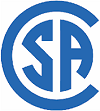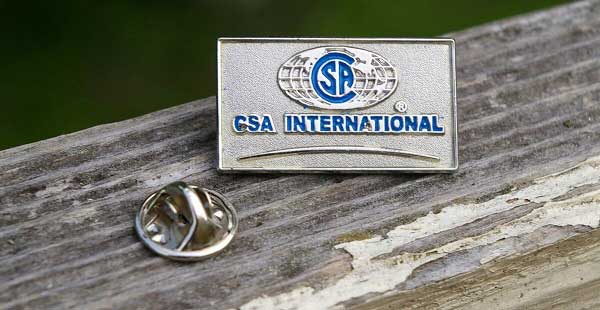
|
Canadian Standards Association |
The Canadian Standards Association (CSA)
CSA (Canadian Standards Association) is a non-profit standards organization that develops standards in 57 areas. CSA publishes standards in printed and electronic form and provides training and advisory services. The CSA is made up of representatives from industry, government and consumer groups.
The CSA was founded in 1919 as the Canadian Engineering Standards Association (CESA) and entrusted by the federal government with the task of creating standards. During the First World War, the lack of interoperability of engineering resources led to frustration, injury and death. Great Britain called on Canada to establish a standards committee.
CSA is accredited by the Standards Council of Canada, a government agency that promotes efficient and effective standardization in Canada. This accreditation confirms that CSA is capable of performing the tasks of standards development and certification and is based on internationally recognized criteria and procedures.
The registered CSA mark indicates that a product has been independently tested and certified to meet recognized safety or performance standards.
History
During the First World War, the lack of interoperability of technical means led to frustration, injuries and death. Britain called on Canada to establish a standards committee.
Sir John Kennedy, as chairman of the Canadian Advisory Committee of Civil Engineers, led the investigation into the need for an independent Canadian standards organization. The result was the founding of the Canadian Engineering Standards Association (CESA) in 1919. The CESA was entrusted by the federal government with the task of creating standards. In the beginning, it dealt with specific needs: Aircraft parts, bridges, construction, electrical work and wire ropes. The first standards issued by the CESA concerned steel railroad bridges (1920).

In 1927, the CESA published the Canadian Electrical Code, a document that is still the CSA's best seller. Enforcement of the code required product testing, and in 1933 the Hydro-Electric Power Commission of Ontario became the sole source for nationwide testing. In 1940, CESA assumed responsibility for the testing and certification of electrical products intended for sale and installation in Canada. In 1944, CESA was renamed the Canadian Standards Association (CSA). The certification mark was introduced in 1946.
In the 1950s, the CSA formed international alliances in the UK, Japan and the Netherlands to expand its testing and certification scope. The testing laboratories were expanded from their first location in Toronto to laboratories in Montreal, Vancouver and Winnipeg.
In the 1960s, the CSA developed national standards for health and safety in the workplace and created standards for headgear and safety footwear. In the late 1960s and early 1970s, the CSA began to focus more on consumer standards, including bicycles, credit cards and child-resistant packaging for pharmaceuticals. In 1984, CSA founded QMI, the Quality Management Institute for the registration of ISO9000 and other standards.
In 1999, CSA International was established to provide international product testing and certification services, while CSA shifted its focus to standards development and training. In 2001, these three divisions were merged under the name CSA Group. In 2004, OnSpeX was established as the fourth division of CSA Group. In 2008, QMI was sold to SAI-Global for 40 million dollars. In 2009, CSA acquired SIRA.
Development of standards
The CSA has the task of developing standards. Fifty-seven different specialty areas include climate change, corporate governance, and safety and performance standards for electrical and electronic equipment, industrial equipment, boilers and pressure vessels, compressed gas equipment, environmental protection and building materials, among others.

Most standards are voluntary, meaning that there are no laws requiring their application. Nevertheless, compliance with standards is an advantage for companies, as they show that products have been independently tested for compliance with certain standards. The CSA mark is a registered certification mark and can only be applied by someone who is licensed or otherwise authorized by the CSA.
CSA developed the CAN/CSA Z299 series of quality assurance standards, which are still in use today. They are an alternative to the ISO 9000 series of quality standards.
The laws and regulations of most municipalities, provinces and states in North America require that certain products be tested by a nationally recognized testing laboratory (NRTL) to a specific standard or group of standards.
Currently, forty percent of all standards issued by CSA are referenced in Canadian legislation. CSA's sister company, CSA International, is an NRTL that manufacturers can choose because it is usually required by law or requested by the customer.
References.. www.carbontracc.com | delta-engineering.be | www.csagroup.org
Related Post(s)

The Canadian Registration Number (CRN) is a number assigned to a part (fitting), equipment or piping system by each province or territory of Canada...